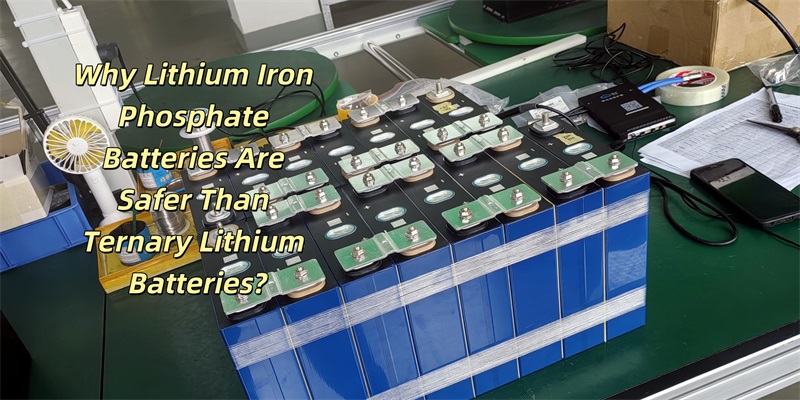Why Lithium Iron Phosphate Batteries Are Safer Than Ternary Lithium Batteries?

The key difference between ternary lithium batteries and lithium iron phosphate (LiFePO4) batteries lies in their energy density and safety. Ternary lithium batteries offer higher energy density, but their safety is often questioned. In contrast, LiFePO4 batteries have lower energy density but are considered significantly safer. For example, in the same 18650 cell format (18mm diameter, 65mm height), ternary lithium batteries can reach up to 3500mAh, while LiFePO4 batteries max out at 2000mAh.
Is Lithium Iron Phosphate Battery Safe?
LiFePO4 batteries use lithium iron phosphate as the cathode material. Unlike lithium cobalt oxide or ternary materials, the P-O bond in LiFePO4 is highly stable, preventing decomposition even under high temperatures or overcharging. This makes them far less prone to thermal runaway, combustion, or explosion.
Advantages of LiFePO4 Batteries:
· Long lifespan – Over 4,000 cycles at 80% depth of discharge (DOD), lasting 10-15 years.
· High safety – Passes rigorous safety tests; does not explode even in accidents.
· Fast charging – Can be fully charged in 40 minutes at 1.5C rate.
· Heat resistance – Stable up to 350-500°C.
· No memory effect – Can be charged at any state without capacity loss.
· Eco-friendly – Non-toxic, pollution-free, and made from abundant low-cost materials.
Is Ternary Lithium Battery Safe?
While ternary lithium batteries (NMC/NCA) are widely used due to their high energy density, they have critical safety drawbacks:
1. Thermal instability – Decomposes at ~200°C, releasing oxygen, which can ignite the electrolyte.
2. Fire risk in accidents – Mechanical damage can cause short circuits, leading to thermal runaway and rapid temperature spikes above 300°C.
3. Combustion risk – Unlike LiFePO4, which remains stable at 700-800°C, ternary batteries can deflagrate violently when overheated.
Which Is Safer?
The safety difference stems from cathode material stability:
· Ternary lithium decomposes at 200°C, releasing oxygen and accelerating fires.
· LiFePO4 remains stable until 700-800°C and does not release oxygen, making combustion far less likely.
However, battery safety also depends on the BMS (Battery Management System), which prevents overcharging, overheating, and short circuits. While ternary batteries are inherently riskier, proper design can mitigate some dangers.
Conclusion
LiFePO4 batteries are significantly safer than ternary lithium batteries due to their thermal stability and non-combustible nature. While ternary batteries offer higher energy density, LiFePO4 remains the preferred choice for applications where safety and longevity are critical, such as electric vehicles, energy storage, and medical facilities.

